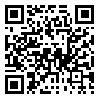Volume 17, Issue 1 (4-2022)
MGj 2022, 17(1): 79-85 |
Back to browse issues page
Transferring of Yr5 and Yr15 genes using marker assisted back cross to confer yellow rust resistance
Abstract: (889 Views)
Yellow or strip rust, caused by Puccinia striiformis f. sp. tritici (Pst) is one of the most important wheat diseases in Iran and all over the world. Genetic resistance is the best control method for this disease. So far, several resistance genes have been identified for this disease. Due to the rapid evolution of yellow rust, the resistances of these genes were not durable. According to the literatures, Yr5 and Yr15 are the most important resistance genes in the seedling stage. In the present study, Yr5 and Yr15 were transferred to Iranian cultivars, Roshan, Mahdavi and Shiraz, using marker assisted backcross (MAB). For this purpose, each of these cultivars was crossed with the standard lines carrying the mentioned genes, and then F1 progeny were crossed with their own recurrent parent (Iranian cultivars) to create backcross 1 (BC1F1) generation. In this generation, in each population, heterozygous genotypes carrying the resistance genes were identified using a specific marker, then backcrossed with their own recurrent parent to create second backcross (BC2F1) generation. Third backcross (BC3F1) generation was also created using the same method. In each backcross generation, two types of genotypes including susceptible homozygous and heterozygous were observed. The similarities of the created isogenic lines with their recurrent parents are 93.75%. After some next backcross and a selfing generation, yellow rust resistant isogenic lines would be created. If created resistant isogenic lines are significantly better than newly introduced cultivars, they could introduced to the farmer's to reduce pesticide consumption in addition to disease control. The created resistant lines will have a chance to be introduced as a new cultivar if they have better agronomic characteristics in comparison with newly introduced cultivars.
Article number: 8
Type of Study: Applicable |
Subject:
Subject 01
Received: 2021/07/23 | Accepted: 2022/01/18 | Published: 2022/04/10
Received: 2021/07/23 | Accepted: 2022/01/18 | Published: 2022/04/10
| Rights and permissions | |
 |
This work is licensed under a Creative Commons Attribution-NonCommercial 4.0 International License. |


